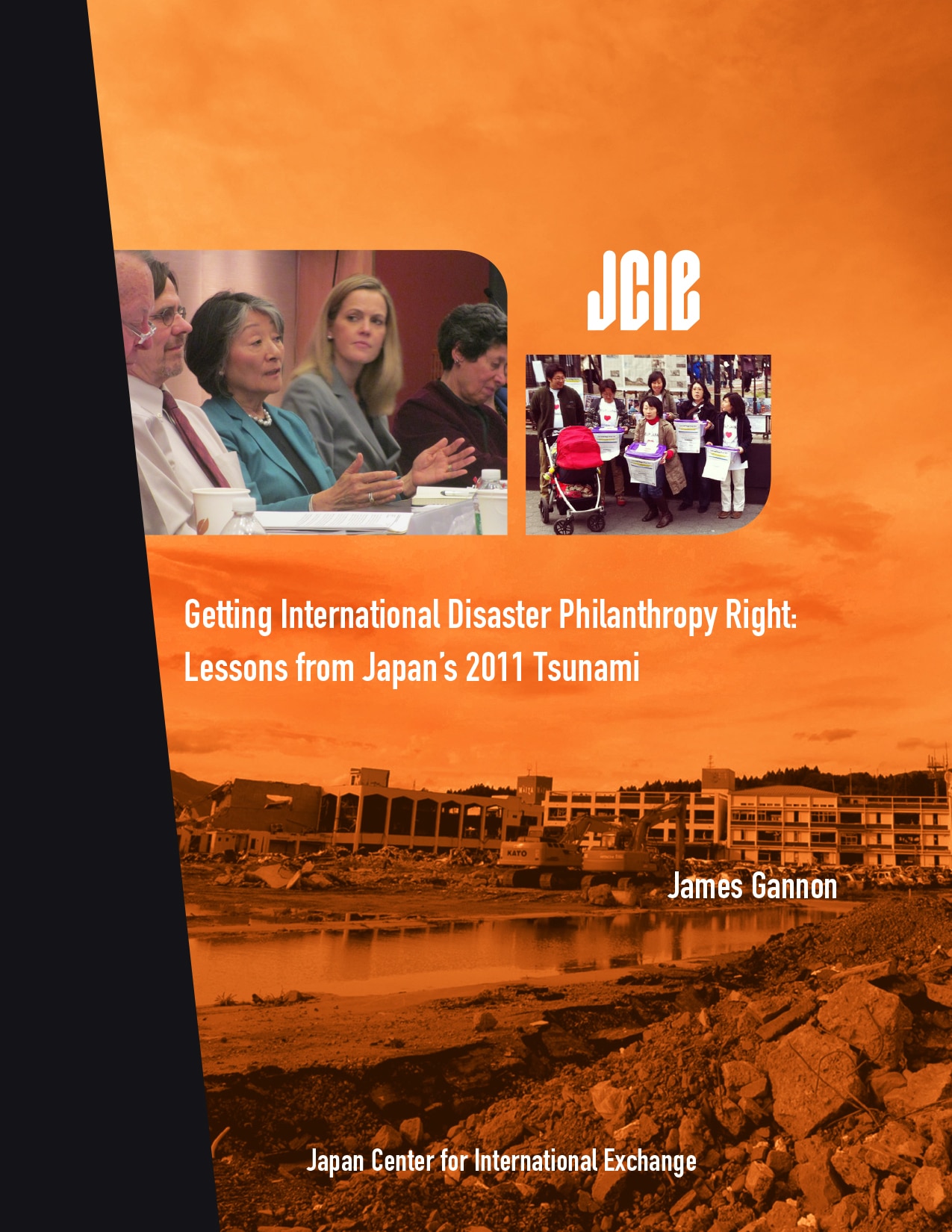Japan’s massive March 2011 disaster triggered one of the largest outpourings of charitable giving that the world has ever seen. The extraordinary US philanthropic response differed significantly from what had been seen with other large-scale overseas disasters, in part because the crisis occurred in a rich, developed nation rather than a developing country. A much more diverse array of organizations got involved; almost all had important gaps in their understanding—either about Japan, philanthropic procedures, or disaster responses—and coordination proved particularly unwieldy.
While the US philanthropic response was a great success in the end, JCIE’s most recent report looks back at where it did well and where it came up short, identifying lessons that can help us respond more effectively the next time a large-scale disaster strikes overseas—and especially if it occurs in another developed country.
Recommendations for Improving International Disaster Philanthropy
- Do a better job of building ties between organizations in the US and other developed countries likely to respond to future disasters.
- Invest in laying the groundwork for donor coordination on disasters in developed countries.
- Be more aware of the full array of groups likely to respond to large-scale disasters in developed countries, not just the traditional humanitarian assistance organizations.
- Create a clearinghouse of basic educational resources on disaster philanthropy.
- Consider channeling more funding through local intermediaries, such as community foundations, and support their international networking.
- Remember to respect partners’ wisdom and autonomy.
- Be more strategic in allocating funds, including budgeting more for long-term recovery.
- Invest more in collecting and utilizing data to ensure balanced funding.
- Make applying easier for grantees by working with overseas partners to create a uniform, culturally appropriate application that can be pulled off the shelf when disasters strike.
- In overseas disasters, put priority on building grantees’ institutional capacity.
- When funding nonprofit organizations overseas, insist on covering sufficient overhead costs.
- Encourage (and fund) grantees to undertake evaluations.
Related Resources
Learning from Japan’s Tsunami: Six Steps to Improve International Disaster Philanthropy (August 2016)
Strengthening US-Japan NGO Partnerships On Humanitarian Responses: Lessons from 3/11 (March 2015)
Bringing People Together: Assessing the Impact of 3/11 on US-Japan Grassroots Exchange (March 2015)
Innovative Disaster Responses: Model Approaches from Japan’s 3/11 Disaster (March 2015)
Slideshow: 10 Innovative Ideas from the 3/11 Response
Annual Survey: US Giving in Response to Japan Disaster Reaches $737 Million (March 2015)
By James Gannon, JCIE/USA

